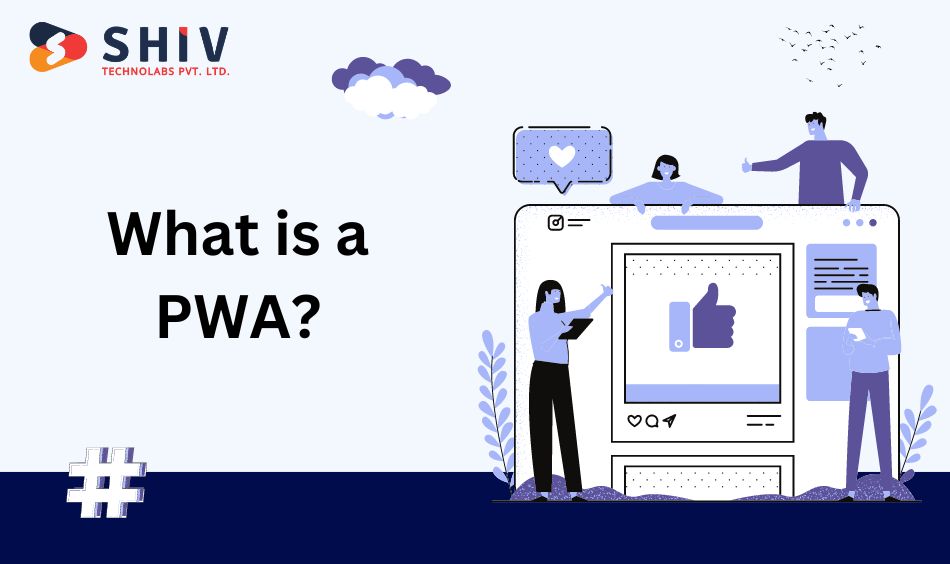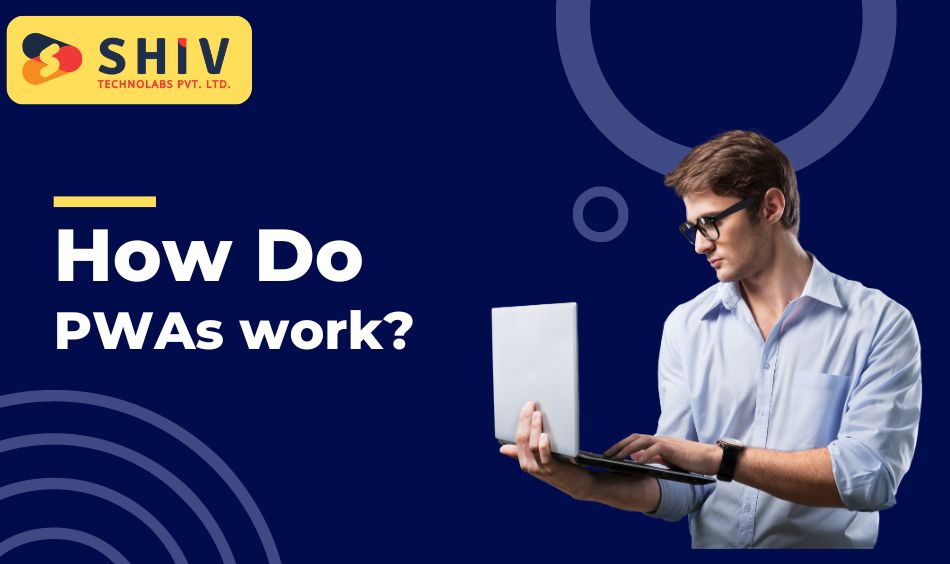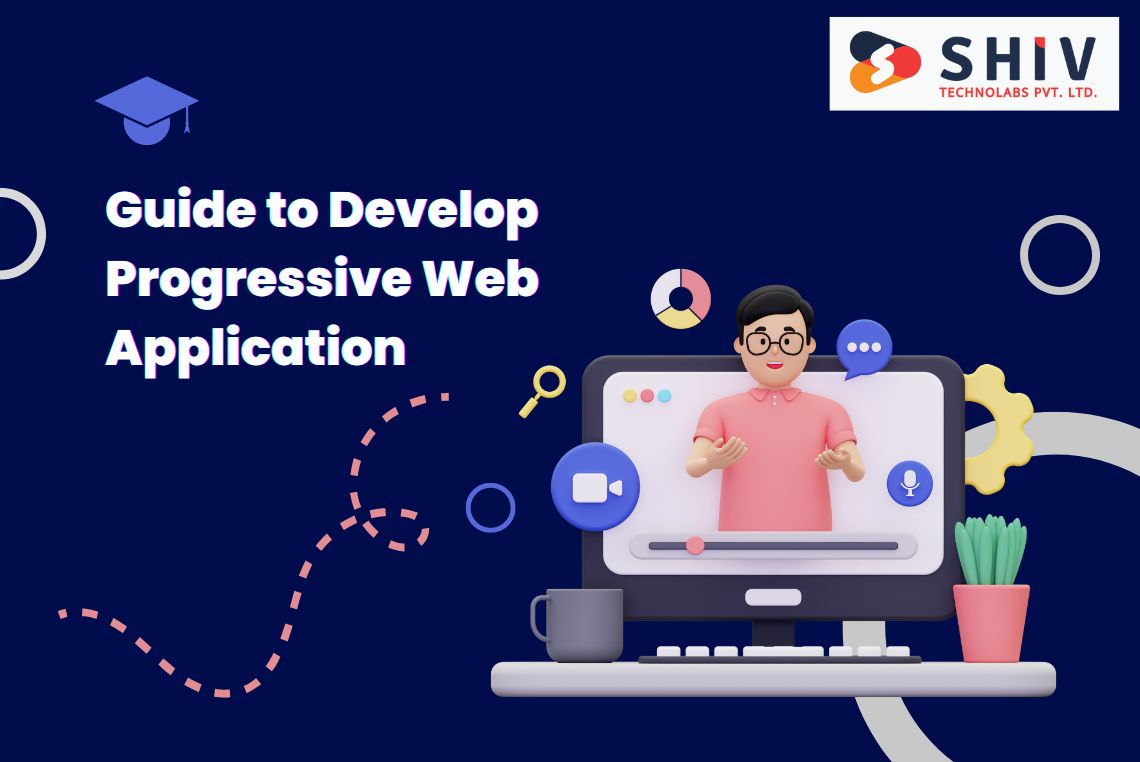Table of Contents
In today’s fast-paced digital world, businesses are constantly searching for ways to improve user experiences and streamline operations. Progressive Web Applications (PWAs) offer a compelling solution by combining the best features of web and mobile applications. Unlike traditional websites, PWAs provide a more engaging, reliable, and immersive user experience, similar to that of native apps. They allow businesses to reach a broader audience while minimizing development costs and complexities.
Recent data highlights the significant impact of PWAs on business performance. For example, companies that adopted PWAs saw an increase in user engagement by up to 50% and a 20% boost in conversions. PWAs can also lead to faster load times, with studies showing that loading times can be reduced by up to 70% compared to traditional websites. This improvement in speed and engagement is particularly beneficial for businesses looking to enhance their digital presence.
Furthermore, integrating advanced technologies like ReactJS in the development of PWAs can further amplify these benefits. ReactJS’s component-based architecture and efficient rendering capabilities contribute to a smoother and more responsive user experience. By leveraging ReactJS for web development, businesses can build PWAs that not only meet but exceed user expectations, driving higher engagement and satisfaction.
What is a PWA?

A Progressive Web Application (PWA) is a type of web application designed to deliver a user experience akin to that of native mobile apps. PWAs are built using standard web technologies such as HTML, CSS, and JavaScript but include modern web features that provide a native-like experience. These features include offline support, push notifications, and a responsive design that adapts to various screen sizes and orientations. The goal of a PWA is to offer a reliable, engaging, and performant experience regardless of the user’s device or network conditions.
# How Do PWAs Work?

PWAs function by incorporating several key technologies to provide an improved user experience. At the core of a PWA is the Service Worker, a background script that manages network requests, caching, and offline functionality. Service Workers enable PWAs to load quickly and operate consistently, even when the user is offline or on a slow network. Additionally, PWAs use a manifest file to control the application’s appearance when installed on a user’s device, including icons, splash screens, and the app’s name.
Integrating ReactJS development into PWAs further refines their functionality. ReactJS’s component-based architecture supports efficient rendering and state management, which contributes to a smoother and more responsive user experience. By using ReactJS for development, businesses can build PWAs that offer a more fluid and engaging interaction, improving performance across various platforms and devices.
How to Make a PWA: Step-by-Step Instructions
Developing a Progressive Web Application (PWA) involves several essential stages, each contributing to creating a functional and engaging app. Here’s a comprehensive guide to help you build, implement, and refine a PWA.
1) Build the App Shell
Creating the app shell is the foundational step in PWA development. This involves setting up the basic structure of your application to deliver a responsive and quick user experience.
- Design the Layout: Start by planning the design of your app, focusing on core elements such as navigation menus, headers, footers, and main content areas. Consider how users will interact with these elements and how they will navigate through the app.
- Develop Static Files: Construct the static HTML files that define the layout and structure. Use CSS for styling to guarantee that the design is visually appealing and consistent. Implement JavaScript to add interactivity and handle user inputs.
- Set Up Caching: Configure your Service Worker to cache the app shell files. This approach allows the application to load swiftly even when offline or with limited network connectivity. Make sure that key assets like HTML, CSS, and JavaScript files are cached for a responsive user experience.
2) Implement Service Workers
Service Workers are a key component of PWAs, providing offline functionality and managing network requests.
- Register the Service Worker: In your main JavaScript file, add the code to register the Service Worker. This script will tell the browser where to locate the Service Worker file and initiate its functionality.
- Write the Service Worker Script: Create the Service Worker script to handle network requests and cache resources. Implement strategies such as caching during install and retrieving resources from the cache when offline. This allows your app to function smoothly even with fluctuating network conditions.
- Test Offline Functionality: Verify that the Service Worker properly intercepts and processes network requests. Test the app’s offline capabilities to confirm that cached content is served correctly and the app remains functional without an active internet connection.
3) Create a Web App Manifest
The Web App Manifest is a JSON file that provides metadata about your application, allowing users to install it on their devices.
- Create the Manifest File: Develop a manifest file that includes essential details such as the application’s name, short name, description, icons, start URL, and theme color. This file defines how your app appears when installed and launched from a user’s home screen.
- Link the Manifest File: Include a reference to the manifest file in the
<head>section of your HTML. This step guarantees that browsers recognize and apply the manifest settings to your PWA. - Customize the Appearance: Specify how the app should look when launched, including display modes (e.g., fullscreen or standalone) and the default orientation. This customization helps create a more integrated experience for users.
4) Add Additional Features
To make your PWA more engaging and functional, consider integrating additional features:
- Push Notifications: Implement push notifications to inform users about updates, promotions, or new content. This feature helps maintain user engagement and interest in your app.
- Background Sync: Add background synchronization to handle data updates when the user is offline. This feature ensures that changes are sent to the server once a connection is restored, keeping data consistent.
- Custom Splash Screen: Design a custom splash screen that appears when the app is launched. This adds a personalized touch and reinforces your brand identity, making the app feel more like a native application.
5) Test the PWA
Thorough testing is crucial to verify that your PWA performs well across various devices and environments.
- Cross-Browser Testing: Test your PWA on different web browsers such as Chrome, Firefox, Safari, and Edge. This helps identify and resolve any browser-specific issues that could affect functionality or appearance.
- Device Testing: Evaluate the app on multiple devices with varying screen sizes and resolutions. This ensures that the app is responsive and delivers a consistent experience on all devices.
- Offline and Slow Network Testing: Check the app’s performance under different network conditions, including offline scenarios. Confirm that the Service Worker handles offline requests correctly and that the app remains usable despite network fluctuations.
6) Launch the PWA
Publishing your PWA involves making it accessible to users and confirming that it operates correctly in a live environment.
- Choose a Hosting Provider: Select a reliable hosting service that supports HTTPS, as PWAs require secure connections. This guarantees that your app is accessible and that users’ data is protected.
- Upload Files: Transfer your application files to the hosting server. Set up any necessary configurations, such as SSL certificates, to facilitate secure communication.
- Verify Deployment: Test the live version of your PWA to confirm that it functions as expected. Check that all features work properly and that the app is accessible to users.
7) Optimize the PWA
After launching your PWA, focus on refining its performance and usability.
- Asset Optimization: Compress and optimize images and other assets to reduce load times. Manage resources efficiently to boost performance and minimize delays.
- Code Refinement: Review and improve your code to address any inefficiencies. Optimize JavaScript and CSS to ensure smooth and fast execution.
- Responsiveness: Confirm that the app adapts effectively to different devices and screen sizes. Make any necessary adjustments to deliver a consistent experience across all platforms.
8) Monitor and Update the PWA
Ongoing monitoring and updates are essential to maintain the quality and relevance of your PWA.
- Monitor Performance: Use analytics tools to track user behavior, engagement metrics, and any performance issues. This data helps identify areas for improvement and informs future updates.
- Implement Updates: Regularly update your app with new features, bug fixes, and performance improvements based on user feedback and technological advancements. This keeps the app current and addresses any issues that arise.
- Adapt to Changes: Stay informed about emerging web technologies and industry trends. Incorporate relevant updates to maintain the app’s competitiveness and continue meeting user needs.
Also read : Top 20 Best React.js Development Tools
Characteristics of a Progressive Web Application
Progressive Web Applications (PWAs) are designed to provide a high-quality user experience across various devices and network conditions. Here are the key characteristics that define a PWA:
- Progressive: PWAs are designed to work for every user, regardless of their browser or device. They progressively enhance their functionality based on the capabilities of the user’s device. This means that even if a user has a basic browser or device, they will still experience essential features of the app. As the technology improves or the user’s device becomes more advanced, the PWA provides additional features and improved performance.
- Responsive: One of the defining features of PWAs is their ability to adjust seamlessly to various screen sizes and orientations. Whether a user accesses the app on a smartphone, tablet, or desktop, the PWA adapts to fit the device’s screen. This responsive design ensures that users have a consistent and enjoyable experience, regardless of how they access the application.
- Connectivity-Independent: PWAs are designed to work effectively regardless of network conditions. They can function offline or with a weak connection, thanks to service workers that manage caching and data synchronization. This feature allows users to access content and perform actions even when they are not connected to the internet, making the app more reliable and accessible.
- App-Like Interactions: PWAs offer a user experience that mimics native applications. This includes smooth animations, gestures, and interactions that make the app feel intuitive and responsive. The app-like experience helps users feel more engaged and comfortable, as the interface is designed to behave in a way that is familiar and easy to use.
- Fresh: PWAs are always up-to-date with the latest content and features. Service workers automatically update the app in the background, ensuring that users always have access to the most recent version of the app. This means that users benefit from the latest improvements and bug fixes without needing to manually update the application.
- Safe: Security is a crucial aspect of PWAs. They are served over HTTPS, which encrypts data exchanged between the user and the server. This secure connection helps protect users from potential threats such as data breaches and ensures that sensitive information remains confidential.
- Discoverable: PWAs are designed to be easily found by search engines. Their content and metadata are accessible through standard web crawlers, which makes them discoverable through search engine results. This characteristic helps increase visibility and attract more users to the application.
- Re-engageable: PWAs include features that encourage users to return to the app. Push notifications and background sync are examples of how PWAs can re-engage users by providing timely updates and reminders. These features help maintain user interest and drive continued interaction with the app.
- Installable: PWAs can be installed on a user’s device, allowing them to access the app directly from their home screen. This installation process adds the app to the device’s home screen, providing a more integrated experience similar to native apps. The installation also allows users to launch the app in full-screen mode without the browser’s address bar.
- Linkable: PWAs can be shared through URLs, making it easy for users to distribute and access the app. This linkability allows users to share the app with others via social media, email, or other communication channels. It simplifies the process of accessing the app and encourages wider adoption.
Also read : Top 15 React Libraries for Modern Businesses
Challenges of Progressive Web App Development
Developing Progressive Web Applications (PWAs) involves navigating several challenges that can impact the effectiveness and user experience of the app. Here are some common issues and considerations:
1) Platform Support
PWAs aim to be universally accessible, but achieving consistent functionality across all platforms can be challenging.
- Browser Compatibility: Different web browsers offer varying levels of support for PWA features. Modern browsers like Chrome and Firefox generally support PWAs well, while others, such as Safari, may lag behind. Developers need to test their PWAs across multiple browsers to address any inconsistencies.
- Device Limitations: Older devices or operating systems might not fully support the latest PWA standards, which can lead to uneven performance. Ensuring broad compatibility often involves testing on a range of devices to identify and resolve potential issues.
2) Managing Service Worker Updates
Service Workers are crucial for offline capabilities and caching, but handling updates to these can be complex.
- Update Process: Managing updates to Service Workers requires careful planning. Developers need to handle cache invalidation and update procedures in a way that minimizes disruption to users. Implementing strategies to smoothly roll out updates is essential.
- Testing Updates: Rigorous testing is necessary to verify that updates to the Service Worker do not introduce new issues. Regular checks help maintain the stability and performance of the app.
3) App Store Distribution
PWAs are distributed primarily through the web, presenting unique challenges for listing them in app stores.
- Store Policies: App stores have specific guidelines that may not align with PWA requirements. This can restrict the ability to list PWAs on platforms like Google Play or the Apple App Store.
- Visibility: Without app store presence, PWAs may rely more on web traffic and SEO for visibility. This could limit user acquisition compared to native apps that benefit from prominent app store placements.
4) Performance Optimization
Maintaining high performance is crucial for user satisfaction but can be demanding with PWAs.
- Resource Management: Efficient handling of resources such as images and scripts is necessary to prevent performance issues. Implementing effective strategies for loading and caching resources helps maintain fast load times and smooth interactions.
- Performance Metrics: Regular monitoring of performance metrics is vital. Tools like Lighthouse can offer insights into areas needing improvement and suggest ways to enhance performance.
5) Offline Functionality
Providing a smooth offline experience is a core feature of PWAs but can be challenging to implement effectively.
- Data Synchronization: Managing data synchronization between offline and online states requires careful planning. Developers need to handle data changes when offline and synchronize those changes when connectivity is restored.
- User Experience: Designing a useful offline experience involves providing relevant content and clear notifications about connectivity status. Ensuring users can still interact with the app effectively without an internet connection is key.
6) Security Concerns
Security is critical in PWA development, especially when handling sensitive data.
- Data Protection: It’s crucial to protect data exchanged between users and servers through encryption. Using HTTPS helps safeguard user information from potential breaches.
- Vulnerability Management: Regular updates to address security vulnerabilities are necessary. Staying informed about potential threats and applying security patches helps maintain the integrity and safety of the application.
Conclusion
Progressive Web Applications represent a significant advancement in web technology, combining the best aspects of web and native apps to deliver superior user experiences. By incorporating features such as offline access, responsive design, and app-like interactions, PWAs can offer reliable and engaging experiences across various devices and network conditions. Despite the challenges associated with platform support, service worker management, and security, addressing these issues effectively can lead to the successful development of a PWA that meets users’ needs.
As businesses and developers continue to adopt PWAs, the ability to adapt to evolving technologies and user expectations will be crucial. Embracing these innovative web solutions can provide a competitive edge and enhance user satisfaction.
At Shiv Technolabs, we are dedicated to advancing your digital presence with expert web solutions. As a leading ReactJS Development Company in Saudi Arabia, we specialize in creating Progressive Web Applications that deliver outstanding performance and user experiences. Our team of skilled developers is committed to crafting applications that meet your specific business needs, ensuring functionality across all devices and platforms. Partner with Shiv Technolabs to leverage our expertise and drive your digital success forward.




















